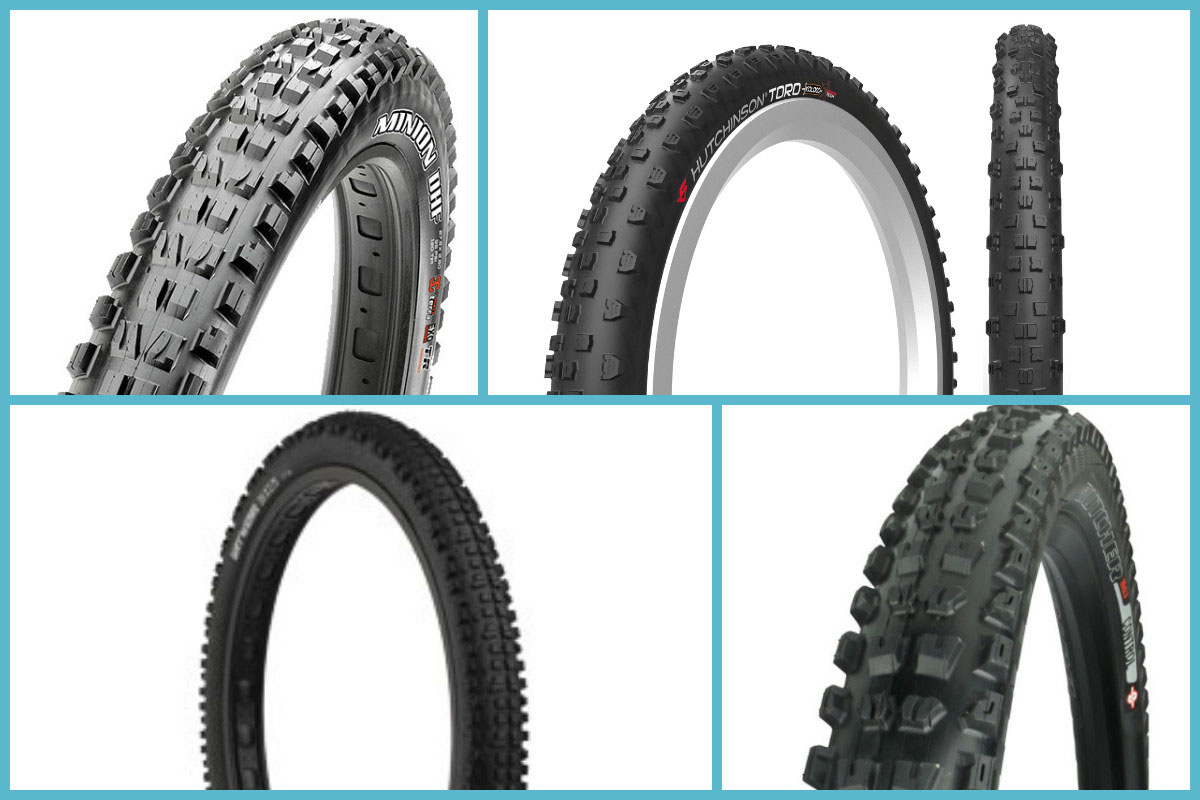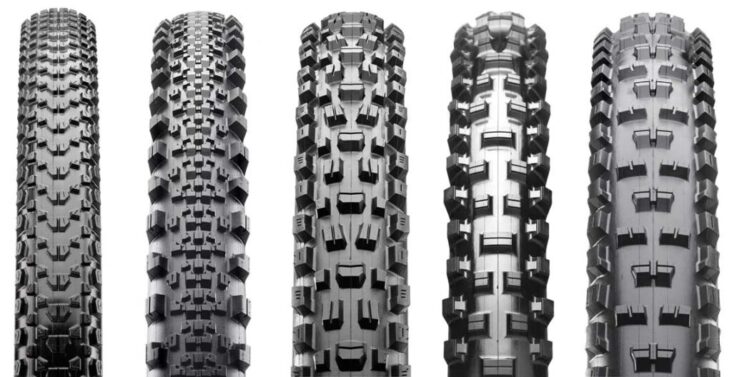Understanding Hybrid Mountain Bike Tires: A Comprehensive Guide
Hybrid mountain bike tires are a unique blend of regular mountain bike tires and road bike tires, designed to provide the best of both worlds. These tires offer superior traction and durability on various terrains, making them an excellent choice for cyclists who enjoy both on-road and off-road adventures. The versatility of hybrid mountain bike tires sets them apart from traditional bike tires, offering a smooth and safe riding experience.
Selecting the right hybrid mountain bike tires is crucial for optimal performance and safety. Factors such as tread patterns, tire width, tire compounds, and terrain compatibility play a significant role in enhancing performance and ensuring safety. By understanding these factors, cyclists can make informed decisions when choosing the right tires for their bike and riding style.
Factors to Consider When Choosing Hybrid Mountain Bike Tires
Selecting the right hybrid mountain bike tires is crucial for an enjoyable and safe riding experience. Here are some key factors to consider when choosing the perfect tires for your bike and riding style:
- Tread patterns: The tread pattern on hybrid mountain bike tires affects traction, rolling resistance, and durability. Tires with deeper, more aggressive tread patterns offer better traction on loose or slippery surfaces, while tires with shallow, smooth tread patterns provide less rolling resistance on paved roads.
- Tire width: The width of hybrid mountain bike tires impacts stability, traction, and comfort. Wider tires offer better traction and stability on rough terrains, while narrower tires provide less rolling resistance on smooth surfaces. Consider the bike’s frame and fork clearance before selecting a tire width.
- Tire compounds: The compound of hybrid mountain bike tires refers to the rubber mixture used in their construction. Softer compounds offer better traction and grip but wear out faster, while harder compounds provide longer wear but less traction. Look for a compound that balances grip and durability for your specific riding conditions.
- Terrain compatibility: Hybrid mountain bike tires are designed to handle various terrains, but some are better suited for specific surfaces. For example, tires with aggressive tread patterns and reinforced sidewalls perform well on rocky or root-infested trails, while tires with smooth tread patterns and lightweight construction are ideal for gravel or paved roads.
By considering these factors, cyclists can select hybrid mountain bike tires that enhance performance, ensure safety, and provide a smooth riding experience.
Top Hybrid Mountain Bike Tires in the Market
When it comes to hybrid mountain bike tires, several top-performing brands and models are worth considering. Here are some of the best hybrid mountain bike tires available in the market, along with their unique selling points and suitability for different terrains and riding styles:
- Maxxis Crossmark II: Known for their versatility, the Crossmark II tires are suitable for various terrains, from gravel to light trails. They offer excellent traction, low rolling resistance, and puncture resistance.
- Schwalbe Rapid Rob: These tires are perfect for cyclists who frequently switch between paved roads and light off-road trails. The Rapid Rob tires provide excellent grip, low rolling resistance, and durability, making them an excellent choice for hybrid bikes.
- Continental Contact Speed: The Contact Speed tires are designed for speed and efficiency on paved roads and hard-packed trails. They offer minimal rolling resistance, excellent grip, and puncture protection, making them an ideal choice for long-distance rides.
- Vittoria Terreno Dry: These tires are perfect for cyclists who prefer dry and loose terrains. The Terreno Dry tires offer excellent traction, durability, and versatility, making them suitable for various riding styles and terrains.
By considering these top hybrid mountain bike tires, cyclists can select a tire that meets their specific needs and enhances their riding experience.
How to Install Hybrid Mountain Bike Tires: A Step-by-Step Guide
Installing hybrid mountain bike tires is a relatively straightforward process that requires a few tools and some basic knowledge. Here’s a step-by-step guide on how to install hybrid mountain bike tires:
- Gather your tools: You’ll need a set of tire levers, a bike pump, and the new hybrid mountain bike tires. If you’re replacing an old tire, you’ll also need a set of wrenches to remove the wheels from the bike.
- Remove the wheel: Use the appropriate wrench to loosen the quick-release lever or remove the nuts holding the wheel in place. Carefully lift the wheel out of the bike frame or fork.
- Deflate the tire: If the tire is already inflated, use the bike pump to deflate it completely. This will make it easier to remove the tire from the rim.
- Remove the old tire: Insert one tire lever under the bead of the tire and pry it up and over the rim. Use the second tire lever to continue removing the tire from the rim, working your way around the tire until it’s completely removed.
- Install the new tire: Place one side of the new tire bead onto the rim, making sure it’s properly seated. Inflate the tire slightly to help the other bead pop onto the rim.
- Inflate the tire: Use a bike pump to inflate the tire to the recommended pressure, which can be found on the tire’s sidewall. Make sure the tire is properly seated on the rim and there are no bulges or dips in the tire.
- Reinstall the wheel: Carefully place the wheel back into the bike frame or fork, making sure the chain is properly engaged with the cassette or freewheel. Tighten the quick-release lever or nuts to secure the wheel in place.
- Check the tire pressure: Before each ride, check the tire pressure to ensure it’s at the recommended level. Proper tire inflation is essential for optimal performance and safety.
- Maintain the tires: Regularly inspect the tires for signs of wear, damage, or debris. Remove any debris and replace the tires if they show signs of significant wear or damage.
By following these steps, cyclists can ensure their hybrid mountain bike tires are installed correctly and maintained properly for optimal performance and longevity.
Comparing Hybrid Mountain Bike Tires: Top Brands Reviewed
When it comes to hybrid mountain bike tires, there are several top brands to consider, each with its unique selling points and strengths. Here’s an in-depth comparison of the top hybrid mountain bike tires from leading brands, evaluating their performance, durability, and value for money:
| Brand | Tire Model | Performance | Durability | Value for Money |
|---|---|---|---|---|
| Maxxis | Crossmark II | Excellent traction and low rolling resistance on various terrains | High puncture resistance and durability | Moderate price point |
| Schwalbe | Rapid Rob | Excellent grip and low rolling resistance on paved roads and light off-road trails | High durability and puncture resistance | Affordable price point |
| Continental | Contact Speed | Minimal rolling resistance and excellent grip on paved roads | High durability and puncture resistance | Moderate price point |
| Vittoria | Terreno Dry | Excellent traction and durability on dry and loose terrains | High puncture resistance and durability | Moderate to high price point |
By comparing these top hybrid mountain bike tires, cyclists can make an informed decision based on their specific needs and preferences. It’s essential to consider factors such as performance, durability, and value for money when choosing the right tires for their bike and riding style.
Maximizing the Performance of Your Hybrid Mountain Bike Tires
To get the most out of your hybrid mountain bike tires, it’s essential to follow a few tips and tricks for proper maintenance, tire pressure, terrain selection, and regular rotation and replacement. Here’s how to maximize the performance of your hybrid mountain bike tires:
- Proper tire pressure: Check the tire pressure before each ride to ensure it’s at the recommended level, which can be found on the tire’s sidewall. Proper tire pressure is essential for optimal performance, safety, and longevity.
- Maintenance: Regularly inspect the tires for signs of wear, damage, or debris. Remove any debris and replace the tires if they show signs of significant wear or damage. Keep the tires clean and free of dirt and grime, which can affect performance and longevity.
- Terrain selection: Choose the right tires for the terrain you’ll be riding on. Hybrid mountain bike tires are designed for various terrains, from gravel to light trails, but some are better suited for specific surfaces. Consider the tread patterns, tire width, and tire compounds when selecting the right tires for your riding style and terrain.
- Regular tire rotation: Regularly rotating the tires can help ensure even wear and prolong their lifespan. Rotate the tires every 3,000 to 5,000 miles or as recommended by the tire manufacturer.
- Timely tire replacement: Replace the tires when they show signs of significant wear, damage, or when they no longer perform as expected. Worn-out tires can affect safety, performance, and longevity, so it’s essential to replace them promptly.
By following these tips and tricks, cyclists can maximize the performance of their hybrid mountain bike tires, ensuring a smooth and safe riding experience. Proper maintenance, tire pressure, terrain selection, and regular rotation and replacement are crucial for getting the most out of your tires and prolonging their lifespan.
Making an Informed Decision: Choosing the Right Hybrid Mountain Bike Tires
When it comes to selecting the right hybrid mountain bike tires, there are several key factors to consider. By following this checklist, cyclists can make an informed decision based on their specific needs and preferences, prioritizing safety, performance, and durability:
- Tread patterns: Consider the tread patterns of the tires, which can affect traction, rolling resistance, and durability. Look for tires with aggressive tread patterns for better traction on loose or slippery surfaces, and smooth tread patterns for less rolling resistance on paved roads.
- Tire width: The width of the tires can impact stability, traction, and comfort. Wider tires offer better traction and stability on rough terrains, while narrower tires provide less rolling resistance on smooth surfaces. Consider the bike’s frame and fork clearance before selecting a tire width.
- Tire compounds: The compound of the tires refers to the rubber mixture used in their construction. Softer compounds offer better traction and grip but wear out faster, while harder compounds provide longer wear but less traction. Look for a compound that balances grip and durability for your specific riding conditions.
- Terrain compatibility: Hybrid mountain bike tires are designed to handle various terrains, but some are better suited for specific surfaces. Consider the terrain you’ll be riding on and choose tires that are compatible with that terrain. For example, tires with aggressive tread patterns and reinforced sidewalls perform well on rocky or root-infested trails, while tires with smooth tread patterns and lightweight construction are ideal for gravel or paved roads.
- Performance and durability: Evaluate the performance and durability of the tires, considering factors such as puncture resistance, tread life, and overall construction. Look for tires that offer a good balance between performance and durability, and consider the value for money when making your decision.
By following this checklist, cyclists can choose the right hybrid mountain bike tires that meet their specific needs and preferences, ensuring a smooth and safe riding experience. Remember to prioritize safety, performance, and durability when making your decision.






